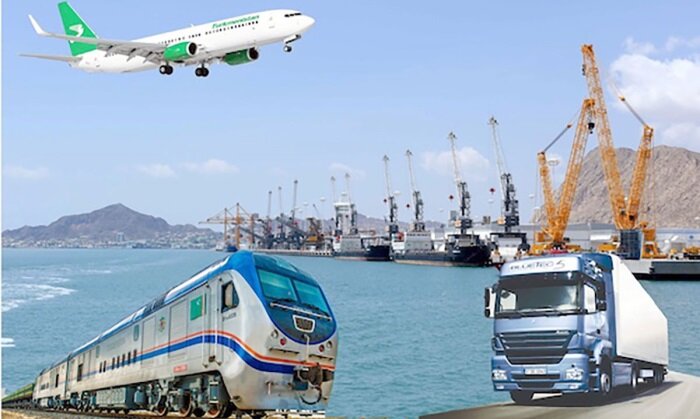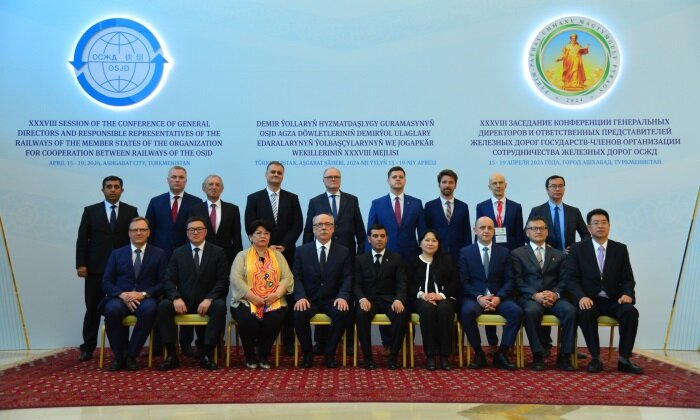Back in 1960, the Aral Sea was the fourth largest inland body of water in the world.
 On January 6, a well-known Turkmen scientist, Doctor of Technical Sciences Allaberdy Ilyasov, a regular expert of CentralAsia.news, once again prepared an analytical article for the online media. In the publication, the specialist told the readers how, using the example of the experience of Turkmenistan, it is possible to combat the global environmental problem — the disappearance of the Aral Sea.
On January 6, a well-known Turkmen scientist, Doctor of Technical Sciences Allaberdy Ilyasov, a regular expert of CentralAsia.news, once again prepared an analytical article for the online media. In the publication, the specialist told the readers how, using the example of the experience of Turkmenistan, it is possible to combat the global environmental problem — the disappearance of the Aral Sea.
The environmental policy of Turkmenistan pursues global interests
Turkmen authorities pay special attention to the preservation of the environment in the country. The protection of the environment, the careful use of natural resources, the introduction of innovative «green» technologies, and, in general, the provision of environmental well-being are very important for the state policy pursued by President Gurbanguly Berdimuhamedov. All large-scale national reform programs in the economic sector and social sphere are closely related to the environmental component, as the most important condition for a prosperous life.
The Aral Sea is an inland of Central Asia. It does not connect with the open ocean and is a lake, although historically it was called the sea.
In this context, it must be noted that in 2017-2019 Turkmenistan fulfilled the powers of the chairmanship of the International Fund for Saving the Aral Sea (IFAS). The country coordinated joint activities and actively created platforms for making agreed decisions related to the ecological problematic spectrum of the Aral Sea.
The disappearance of the Aral oasis
In 1960, the Aral Sea was the fourth largest inland body of water in the world. It is located between two Central Asian deserts — Karakum and Kyzylkum. Even though even in the last millennium the level of this reservoir has fluctuated strongly in different historical periods in a completely natural way, its real drying up started in the 1960s. Then, during the USSR period, many irrigation canals were built. Since then, it has lost 75 percent of its surface, 18 meters of depth, and 90 percent of its volume, and that led to an increase in salinity and the disappearance of most of the unique native fish species.
The influence of the Aral Sea on the climate of the territory is local. A decrease in sea level causes a change of all components of the natural environment — climatic characteristics are gradually changing. In spring and summer, the air temperature rises, while in autumn and winter it decreases. For example, January temperatures go down by 1-2 degrees, July temperatures go up by 2-2.5 degrees, which contributes to an increase in the continentality of the climate.
In climatic conditions with high volatility and high temperature, water was lost during its supply, since the internal network of irrigation fields was made as earthen execution — in the form of ordinary irrigation canals. These losses amounted to more than 30 percent since the water not only evaporated but also disappeared due to filtration into the ground through the entire irrigation network.
What does climate change cause?
Climate change creates additional challenges for the region, which further exacerbate the current environmental and health concerns of the population living there. Today, some technologies provide for measures to replace chemical plant protection products with biological ones and use organic fertilizers instead of mineral and chemical fertilizers.
However, it is difficult to integrate «nature-saving» technologies in the area of the dried-up Aral Sea, where a new desert called Aralkum has formed instead of the sea over the past 55 years. As in any other desert on earth, Aralkum lacks the infrastructure necessary for normal human life, socio-economic development, and maintenance of biodiversity and basic ecosystem services, as well as other conditions necessary for social development.
What to do?
Here are the measures, in my opinion, that should be taken. It is necessary to water the dried-up bottom of the Aral Sea, thus turning the Aral Sea region into a developed agricultural region with animal husbandry, crop production, and environmentally friendly production.
A filtration process takes place on all reservoirs, river beds, and canals. For millennia, these filtration waters accumulate between layers of solid rock and form perennial water lenses. Therefore, on the dried bottom of the Aral Sea, it is advisable to conduct hydrogeological survey work to detect underground water lenses. To do this, it is best to apply the experience of Israel, Egypt, Algeria, the United Arab Emirates, and other countries facing similar problems and their solutions on this issue.
After survey work, it is necessary to build group water supply systems. With the help of the wells of the group water supply systems, the produced underground water is transported through the pipe of water supply systems of artificial reservoirs for further use of irrigation and other needs to restore the ecosystem of the Aral Sea.
It is possible to apply the experience of the construction of the Karakum River, according to which water is transported through pipes in the section from Bereket to Turkmenbashi. This water pipeline supplies water to the industrial, agricultural, and livestock regions of the Balkan region.
What can it lead to?
The construction of a similar water supply system, the use of underground freshwater storage facilities, the introduction of economical technologies in the form of drip and sprinkler irrigation, have development prospects in solving environmental and economic problems in the Aral Sea zone. At the same time, it is necessary to cultivate salt-tolerant vegetation that does not need an abundance of water. Then dangerous salt marshes and sandstorms may become a thing of the past. The region will be prosperous, ecologically clean, and in the future, the Aral Sea will return to its original condition.
Within the main tasks for the revival of the Aral Sea and the preservation of the biosphere reserve, it is necessary to conduct a thorough study and carry out a restoration of the ecosystem in the remaining water surface of the sea and its dried bottom; provide corrective solutions to identify and prioritize pollutants, increase vegetation with the introduction of local group water supply systems.
Such methods will contribute to climate mitigation, increasing soil moisture, and oxygenation of the air. It should be noted that during the growing season vegetation absorbs 7 tons of carbon dioxide, neutralizes 100 tons of dust, and releases 6 tons of oxygen per hectare. Green spaces are a natural habitat for wildlife, they restore ecosystems, help anchor sands, and retain more moisture. And these processes can be initiated on the relevant territory.





